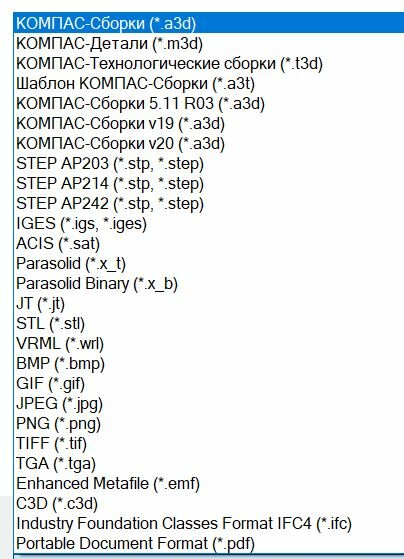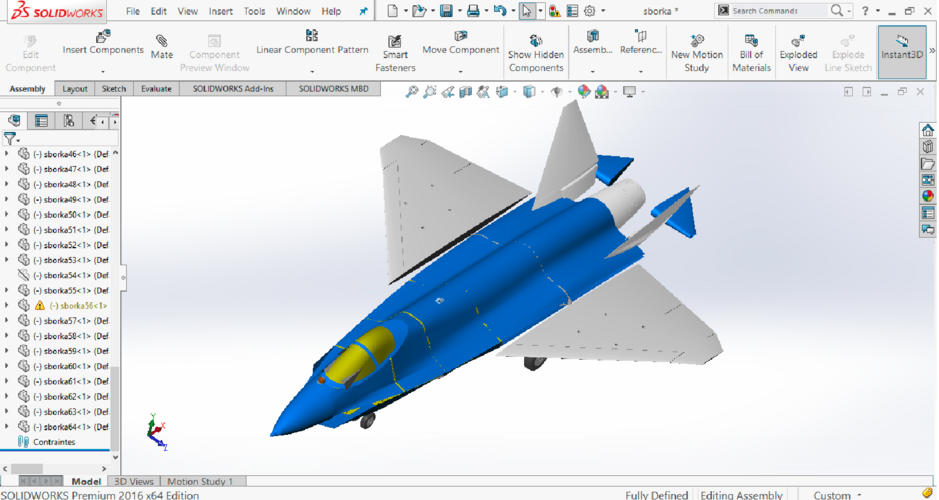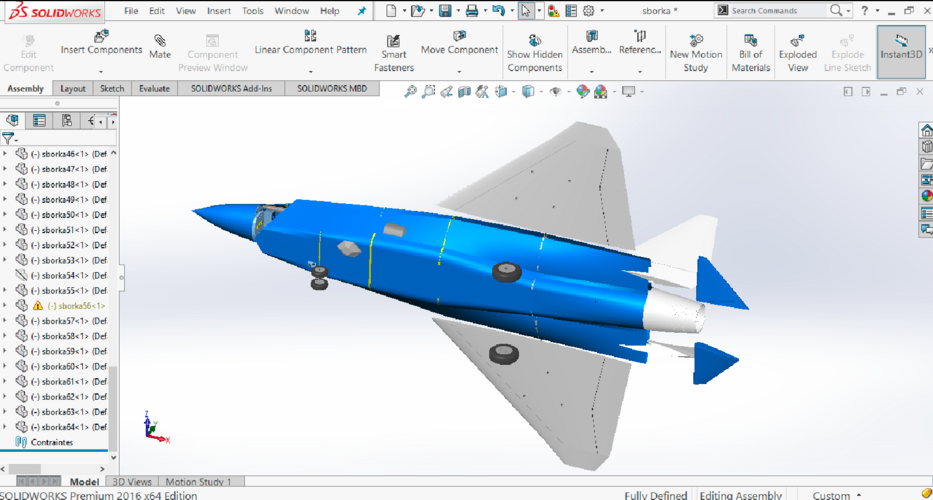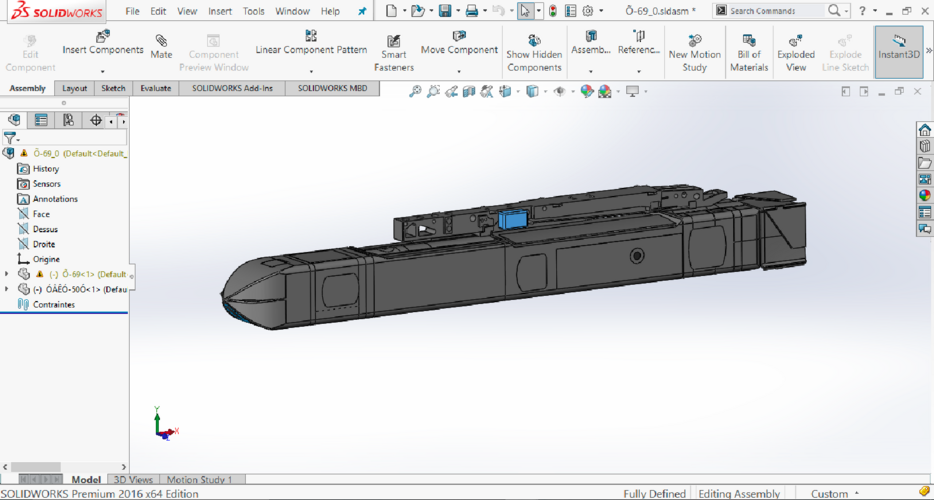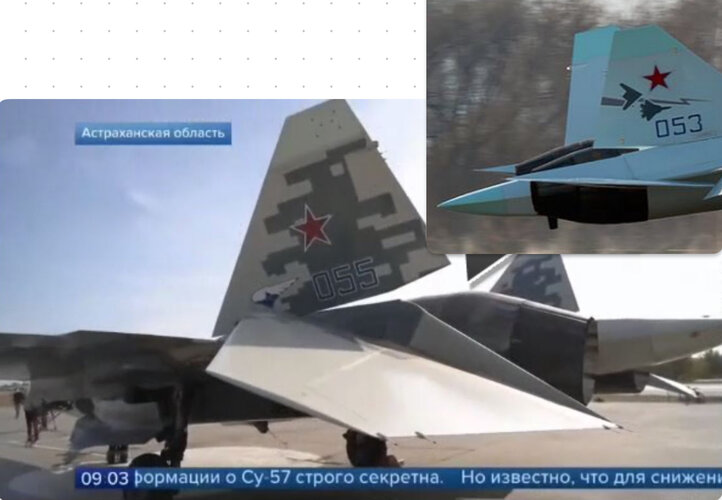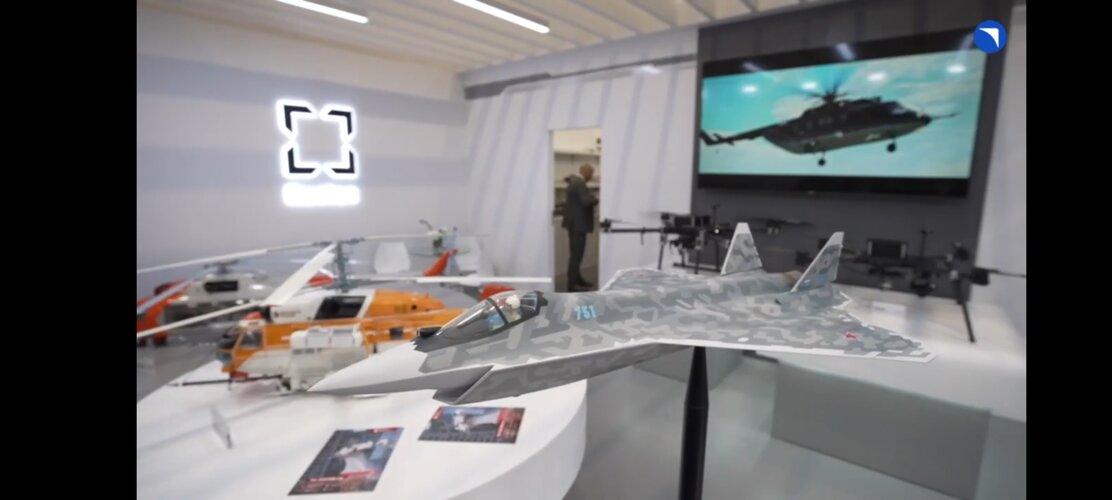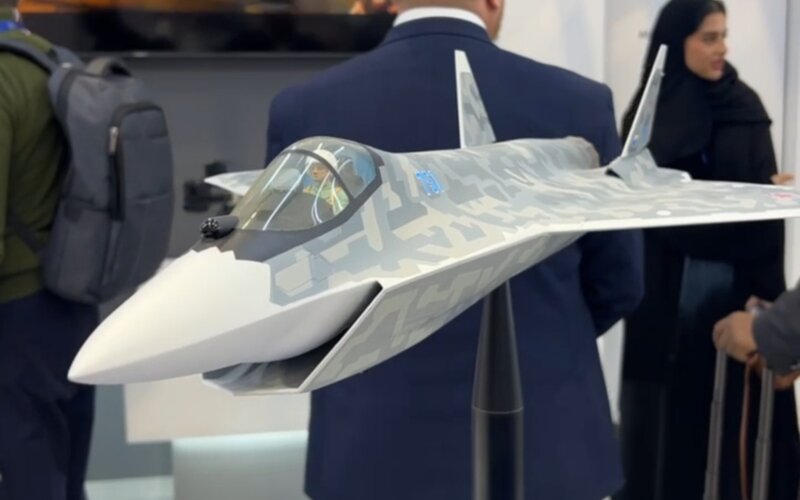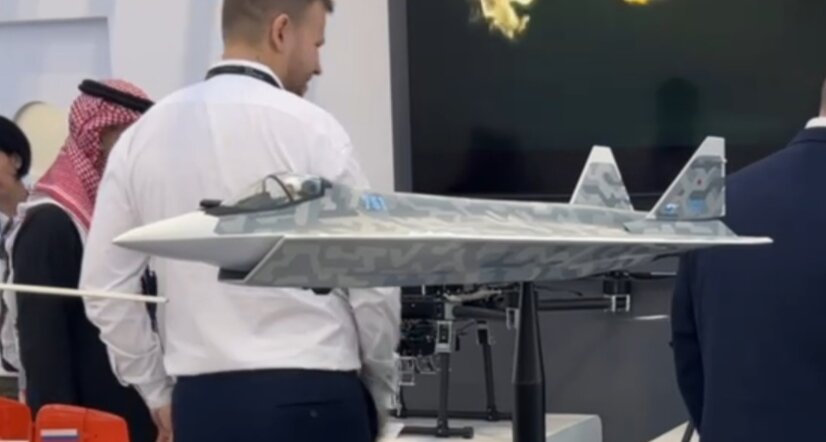No. I have difficulties with modeling external surfaces
You are using an out of date browser. It may not display this or other websites correctly.
You should upgrade or use an alternative browser.
You should upgrade or use an alternative browser.
Sukhoi T-75 LTS (CheckMate)
- Thread starter sublight_
- Start date
Reaper
ACCESS: Secret
- Joined
- 31 March 2009
- Messages
- 301
- Reaction score
- 138
What CAD program are you using?No. I have difficulties with modeling external surfaces
Attachments

Unmanned Su-75 Checkmate with a new tail and wings design was shown
During Army-2023 forum, held at the Kubinka airfield, Russia unveiled for the first time a scale model of its Su-75 Checkmate fighter in an unmanned variation.
- Joined
- 1 April 2006
- Messages
- 11,375
- Reaction score
- 10,209
"One must consider that unmanned variants of fighter jets might deviate from their manned versions. As an illustration, the Su-75 Checkmate exhibits alterations to its wings and tail, possibly attributed to optimizations for automated operation."
What a deep analysis
What a deep analysis
Scott Kenny
ACCESS: USAP
- Joined
- 15 May 2023
- Messages
- 11,560
- Reaction score
- 14,191
Yes, this gets filed under "well, duh.""One must consider that unmanned variants of fighter jets might deviate from their manned versions. As an illustration, the Su-75 Checkmate exhibits alterations to its wings and tail, possibly attributed to optimizations for automated operation."
What a deep analysis
But if you're not going to include the canopy shape, the aerodynamics change a bit...
Considering that new patents clearly show altered flaps and tail featured on manned and manned variants both, it's not even a "well, duh".Yes, this gets filed under "well, duh."
But if you're not going to include the canopy shape, the aerodynamics change a bit...
Last edited:
- Joined
- 2 January 2006
- Messages
- 3,824
- Reaction score
- 5,118

Unmanned Su-75 Checkmate with a new tail and wings design was shown
During Army-2023 forum, held at the Kubinka airfield, Russia unveiled for the first time a scale model of its Su-75 Checkmate fighter in an unmanned variation.bulgarianmilitary.com
Really? IMO anything from bulgarianmilitary.com should be avoided similar to the SCMP, WantChinaTimes and militarywatchmagazine.com! These are most of all pure BS!
- Joined
- 1 April 2006
- Messages
- 11,375
- Reaction score
- 10,209
- Joined
- 1 April 2006
- Messages
- 11,375
- Reaction score
- 10,209
why have you decide so?So the altered flaps are only for the unnamed version?
So is it for both? Someone commented that the different layout was for the drone version, but the patent shows the new layout added to the manned version so I was confused. Is that new design a compromise from having to use the su-57 wing or is it good enough?why have you decide so?
- Joined
- 1 April 2006
- Messages
- 11,375
- Reaction score
- 10,209
there are patents for both manned and unmanned updated design versions on several previos pages.So is it for both? Someone commented that the different layout was for the drone version, but the patent shows the new layout added to the manned version so I was confused. Is that new design a compromise from having to use the su-57 wing or is it good enough?
why listen to 'someone' somewhere and not use own eyes?
Wallmart Republic
ACCESS: Restricted
- Joined
- 21 October 2023
- Messages
- 29
- Reaction score
- 53
Please do, I'll attempt to open it in solidworks.
Wallmart Republic
ACCESS: Restricted
- Joined
- 21 October 2023
- Messages
- 29
- Reaction score
- 53
Let's try IGES format.
Wallmart Republic
ACCESS: Restricted
- Joined
- 21 October 2023
- Messages
- 29
- Reaction score
- 53
No, I'm just learning
Wallmart Republic
ACCESS: Restricted
- Joined
- 21 October 2023
- Messages
- 29
- Reaction score
- 53
How did you obtain the bulkhead cross sections from the available imagery?No, I'm just learning
Scott Kenny
ACCESS: USAP
- Joined
- 15 May 2023
- Messages
- 11,560
- Reaction score
- 14,191
Follow the rivet lines.How did you obtain the bulkhead cross sections from the available imagery?
If you mean the construction of the frames, that is, the image of the main frame, the rest are restored by analogy and by the internal structureHow did you obtain the bulkhead cross sections from the available imagery?
Attachments
Colonial-Marine
UAVs are now friend, drones are the real enemy.
- Joined
- 5 October 2009
- Messages
- 1,468
- Reaction score
- 1,323
I wonder if on the original configuration the amount of elevator area was found to be insufficient? It seems the redesign could have addressed that among other improvements.
Looking at the elevator on the patent I'm confused as to if the end of the root for the vertical tail slides back into the rest of the root when the elevator is pitched up?
Looking at the elevator on the patent I'm confused as to if the end of the root for the vertical tail slides back into the rest of the root when the elevator is pitched up?
TMA1
ACCESS: Top Secret
- Joined
- 6 February 2021
- Messages
- 556
- Reaction score
- 858
Have they ever announced what the percentages are of all the structural components? The thrust to weight issue is pretty vital and it seems there are implications that it will use a greater amount of titanium and composites? I recall that on the felon it utilizes a smaller amount of titanium than some other fifth gen aircraft.
Wallmart Republic
ACCESS: Restricted
- Joined
- 21 October 2023
- Messages
- 29
- Reaction score
- 53
Not to my knowledge, they may be similar to those of the Flatfish since it is the more technologically advanced project which paved the way to this one. Aviation generally employs duralumin alloys and lately composites. Titanium's metallurgy and welding are challenging, though Russia is the world leader and authority. A designer seeks to minimize Ti use if possible not increase it. It is confined to special parts such as landing gear struts, critical bulkheads, wing pivots and turbine blades. Both the SR-71 and T-4 Sotka (and some soviet subs) are all titanium due to the extreme performance, however this made them prohibitively expensive. The genius behind the Mig-25 lays in its ability to achieve superior performance without having extensive recourse to Titanium and hence was built in the hundreds.Have they ever announced what the percentages are of all the structural components? The thrust to weight issue is pretty vital and it seems there are implications that it will use a greater amount of titanium and composites? I recall that on the felon it utilizes a smaller amount of titanium than some other fifth gen aircraft.
The current structural frontier is topological optimization employed in concert with additive technologies to build these arboreal like structures.
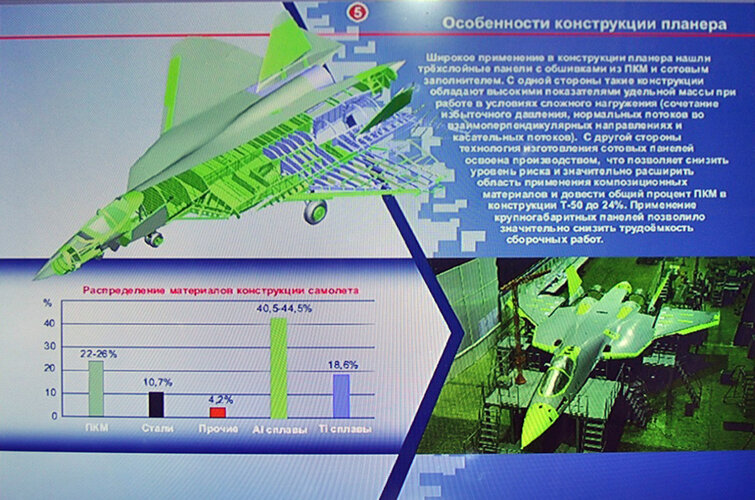
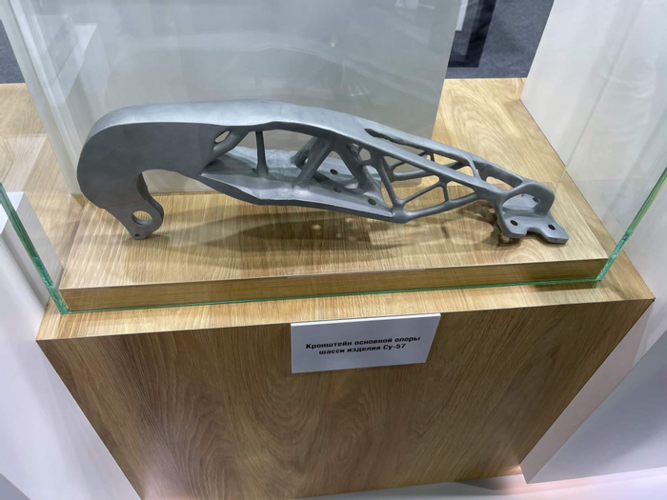
Acatomic
ACCESS: Secret
- Joined
- 18 October 2020
- Messages
- 242
- Reaction score
- 572
Not exactly percentages, but it gives you an idea of what the structure will be made of:Have they ever announced what the percentages are of all the structural components? The thrust to weight issue is pretty vital and it seems there are implications that it will use a greater amount of titanium and composites? I recall that on the felon it utilizes a smaller amount of titanium than some other fifth gen aircraft.
- At the same time, the power frames of the internal power kit are made of titanium alloys, and the remaining parts of the internal power kit are made of aluminum alloys. The skin of the head part of the fuselage and the middle part of the fuselage are made of aluminum alloys, and the outer skin of the tail part of the fuselage are made of polymer composite materials in the form of carbon fiber honeycomb panels.
Acatomic
ACCESS: Secret
- Joined
- 18 October 2020
- Messages
- 242
- Reaction score
- 572
Colonial-Marine
UAVs are now friend, drones are the real enemy.
- Joined
- 5 October 2009
- Messages
- 1,468
- Reaction score
- 1,323
I don't see any obvious changes from the previous one we have seen. Might even be one of the same models that have been shown at prior trade shows.So, the newest variant.
I wonder if we will eventually see a full-scale mock-up of the revised T-75 like the one originally shown when the T-75 was announced? Or if they are going to try to move directly to a prototype or EMD aircraft?
The picture probably refers to the Australian aviation industry.My prediction:

Waiting for what?The picture probably refers to the Australian aviation industry.
- Joined
- 1 April 2006
- Messages
- 11,375
- Reaction score
- 10,209
This is upgraded design model.I don't see any obvious changes from the previous one we have seen. Might even be one of the same models that have been shown at prior trade shows.
NoI wonder if we will eventually see a full-scale mock-up of the revised T-75 like the one originally shown when the T-75 was announced?
Colonial-Marine
UAVs are now friend, drones are the real enemy.
- Joined
- 5 October 2009
- Messages
- 1,468
- Reaction score
- 1,323
Upgraded over the already revised design that has been around since last year? Do you know of any notable changes?This is upgraded design model.
No
Yes, I suppose building another mock-up wouldn't actually help anything.
Upgraded over the already revised design that has been around since last year? Do you know of any notable changes?
Yes, I suppose building another mock-up wouldn't actually help anything.
Sukhoi Reshapes The Su-75 Checkmate | Aviation Week Network
The Russian aircraft company reveals a new design configuration developed using digital design.
Similar threads
-
MAKS 2021 Airshow General News Topic
- Started by overscan (PaulMM)
- Replies: 35

